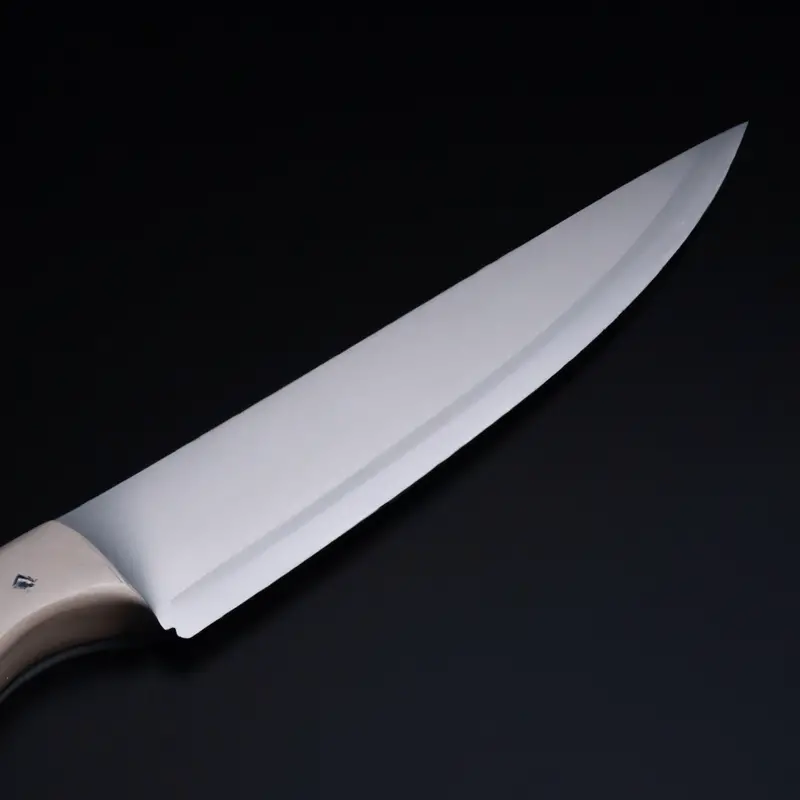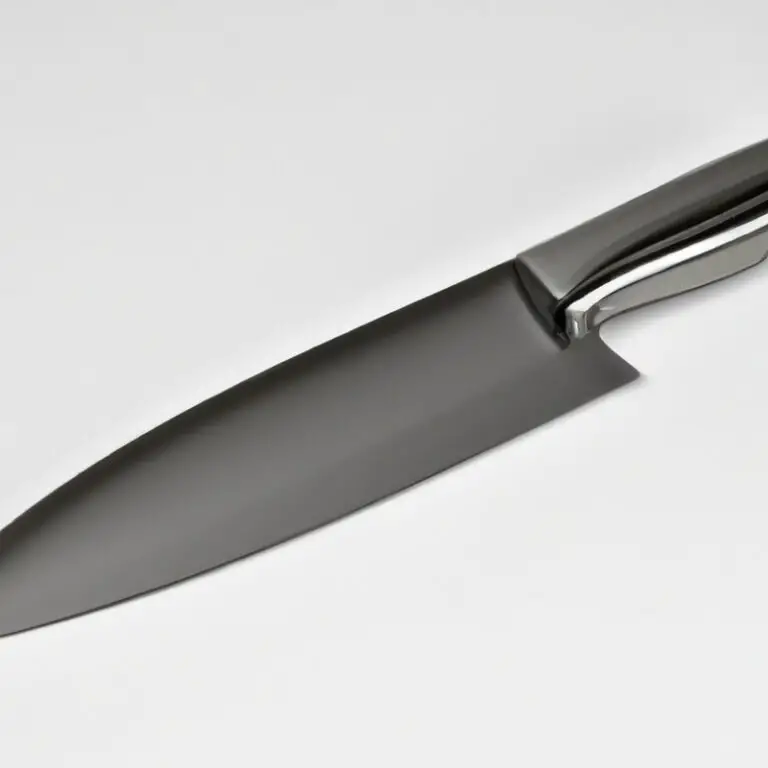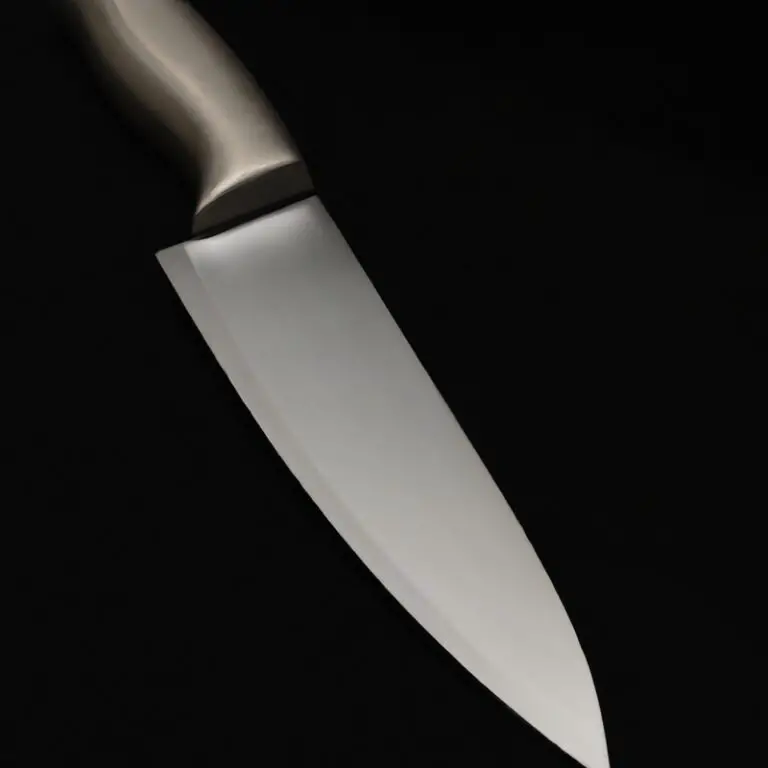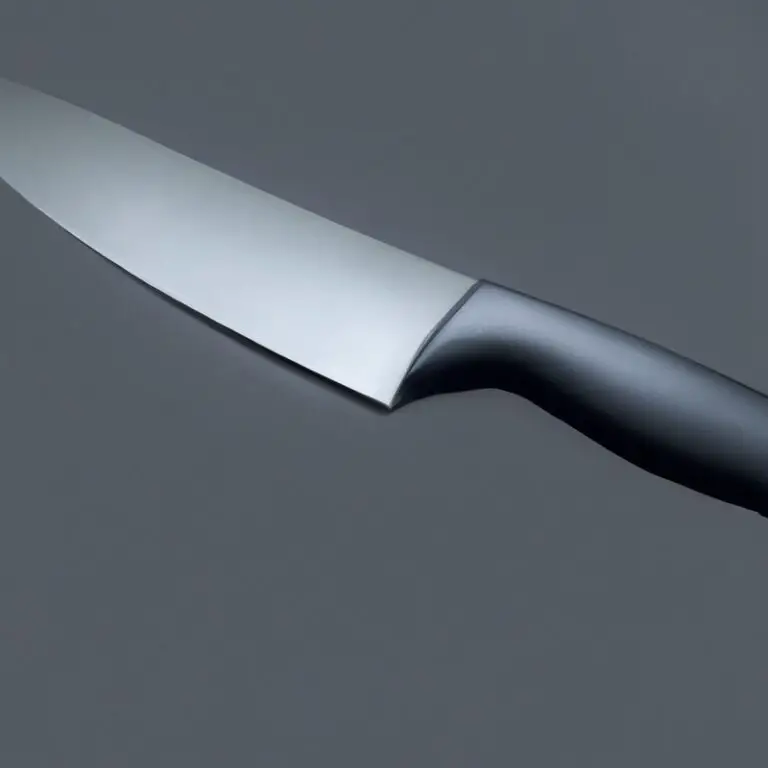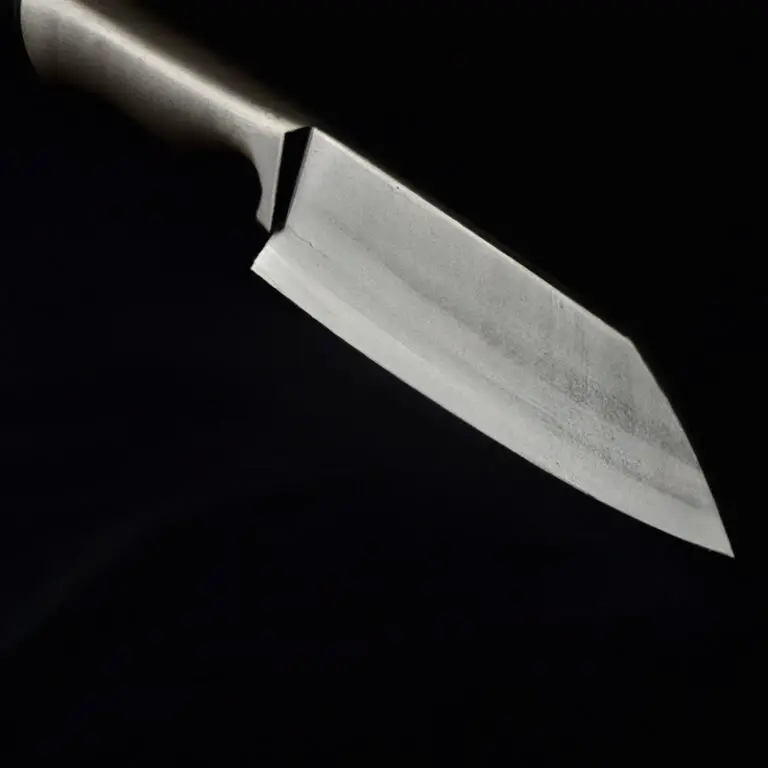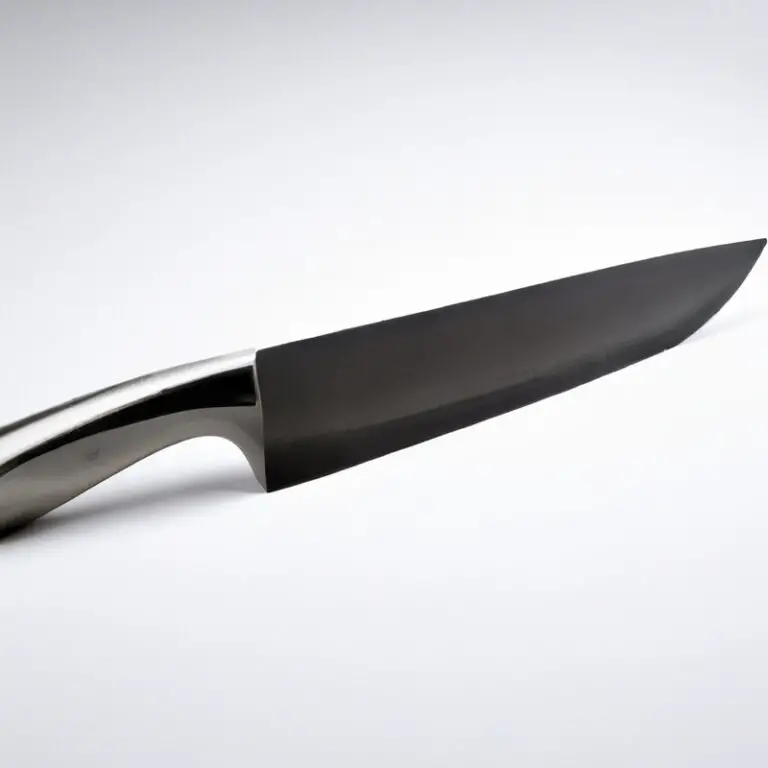How To Cut Through Fibrous Fruits With a Santoku Knife? Easily
Key Takeaways:
- Choose a sharp Santoku knife to effectively cut through fibrous fruits like pineapple, jackfruit, and papaya.
- Use a sawing motion to cut through the tough exterior of the fruit, while applying pressure with your other hand to stabilize it.
- Be cautious and take your time while cutting, as these fruits can be slippery and difficult to maneuver with a knife.
- With proper technique and a good knife, cutting through fibrous fruits can be quick and easy, perfect for adding to smoothies or creating beautiful fruit platters.
Are you tired of struggling to slice through tough fruits like pineapple and butternut squash? Look no further than the Santoku knife – the Japanese multi-purpose knife known for its precision and versatility.
In this article, I’ll guide you through the anatomy of a Santoku knife and share techniques for preparing fibrous fruits with ease.
We’ll also cover the importance of maintaining a sharp blade and proper grip, as well as common mistakes to avoid and the best fruits for your Santoku knife. With practice and patience, you’ll be a master at cutting through tough produce in no time.
| Steps | Ingredients/Tools |
|---|---|
| 1. Cut off the top and bottom of the fruit. | – Santoku knife – Fibrous fruit (e.g., pineapple, mango, papaya) |
| 2. Stand the fruit on one end, and slice downward to remove the skin. | – Cutting board – Bowl (optional, for catching juice) |
| 3. Cut the fruit in half vertically, then slice each half in half again. | |
| 4. Cut out the fibrous core from each quarter piece. | |
| 5. Slice each quarter into desired size and shape. |
The Anatomy of a Santoku Knife: How to Choose the Right One for Cutting Fibrous Fruits
The anatomy of a Santoku knife for cutting fibrous fruits is crucial in achieving the desired results. The ideal Santoku knife should have a sharp blade made of high-quality stainless steel.
A well-balanced and ergonomic knife handle allows for a comfortable grip, optimizing control and reducing the risk of injury.
The blade length of a Santoku knife is typically between 5 and 7 inches. A shorter blade is suitable for cutting smaller fruits while a longer blade is ideal for larger ones.
The blade’s thickness should be thin enough to offer flexibility and effortless serration when cutting through fibrous fruits.
A non-stick coating or dimples on the blade help prevent the fruits from sticking to it, making the cutting process smoother. When choosing a Santoku knife for cutting fibrous fruits, select one that is well-suited for the specific type of fruit you intend to cut.
For instance, fruits with hard rinds like pineapples or melons require a knife with a sharp, pointed tip for precision cuts.
Ultimately, investing in a high-quality Santoku knife is essential for effortless and precise cutting of fibrous fruits.
Techniques for Preparing Fibrous Fruits: Slicing, Dicing, and Chopping with a Santoku Knife
When it comes to cutting fibrous fruits like pineapple or mango, a Santoku knife is an ideal tool. Here are some techniques for preparing fibrous fruits with a Santoku knife:
- Slicing: it’s important to start by removing the top and bottom of the fruit to create a stable base. Then, slice off the skin vertically, starting at the top and following the curve of the fruit. After this, slice the fruit vertically into long, thin pieces.
- Dicing: similarly to slicing, start by cutting off the top and bottom of the fruit and slicing off the skin vertically. Then, cut the fruit horizontally into slices, and then vertically to create small cubes.
- Chopping: first, cut off the top and bottom of the fruit and slice off the skin. Then, slice the fruit vertically into long, thin pieces. Next, stack the pieces and cut them horizontally into smaller chunks.
These techniques require a sharp Santoku knife, which can help make clean cuts that preserve the fruit’s texture and minimize waste. Practice using your Santoku knife to master these techniques and create beautifully sliced, diced, or chopped fibrous fruits.
The Importance of a Sharp Blade: Maintaining and Sharpening Your Santoku Knife for Optimal Cutting
Keeping your Santoku knife sharp is crucial for achieving optimal cutting performance, especially when handling tough and fibrous fruits like pineapples and melons. A dull blade can cause crushing and tearing instead of clean cuts, leading to unevenly sliced and unappetizing fruits.
To maintain a sharp edge, it’s essential to regularly sharpen your Santoku knife using the right tools, such as a sharpening stone or honing rod.
Experts recommend honing the blade before and after each use to straighten and align the edges, which can help extend the blade’s lifespan and avoid frequent sharpening. When sharpening, it’s important to maintain a consistent angle and apply enough pressure to remove the dullness.
Using a honing oil or water can help prevent excess heat and damage to the blade.
After sharpening, make sure to clean and dry the knife properly before storing it in a safe place, such as a knife block or magnetic strip. Regular maintenance and sharpening can help keep your Santoku knife in top-notch condition for years to come, ensuring precise and effortless cuts on any fruits and vegetables.
Remember, a sharp blade is not only essential for achieving the perfect cut, but also for safety purposes, as dull blades tend to slip and cause accidents.
Improving Your Grip: Tips for Holding the Santoku Knife Correctly When Cutting Tough Fruits
Proper grip and handling of the Santoku knife is crucial in successfully cutting tough and fibrous fruits. Follow these tips to improve your grip and ensure safe and effective cutting:
- Hold the handle with a firm grip, making sure your fingers wrap around it comfortably.
- Position your index finger and thumb on either side of the blade’s base, ensuring that they don’t touch the edge.
- Place your other three fingers on the handle, with your middle finger resting on the ridge of the blade for added control.
- Use your arm and shoulder muscles to guide the knife, rather than just your wrist.
- Cut through the fruit using a firm and steady motion, using the length of the blade to make one swift slice.
Remember to maintain a comfortable grip and motion to prevent fatigue and injuries while cutting.
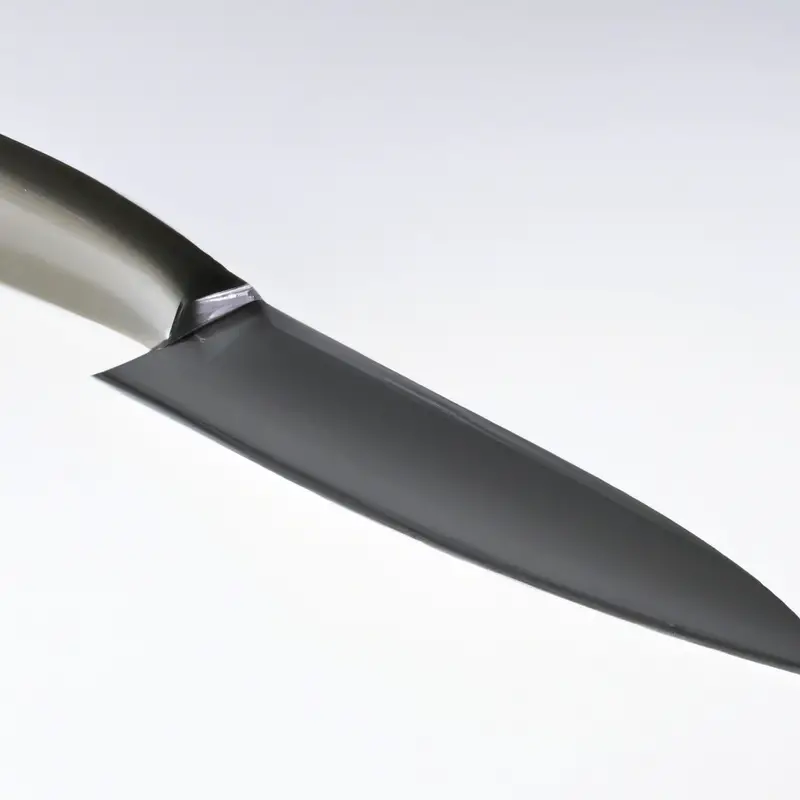
Safety First: Avoiding Injuries When Cutting Through Fibrous Fruits with a Santoku Knife
When cutting through fibrous fruits with a Santoku knife, safety should be your top priority. Here are some tips to help you avoid injuries:
- Use a cutting board: Place a non-slip cutting board on a stable surface. This will help keep the board and knife in place while you are cutting.
- Keep your fingers safe: Keep your free hand away from the blade at all times. Use a claw grip to hold the fruit securely, curling your fingertips under and holding them against the fruit.
- Use a sharp knife: A blunt knife can slip and cause injuries. Make sure your Santoku knife is always sharp and honed for easy and safe cutting.
- Cut slowly and with caution: Do not rush while cutting through fibrous fruits. Use a slow, controlled motion while applying steady pressure.
- Watch out for hidden seeds: Some fibrous fruits have seeds that can be hard to see. Take extra care when cutting around these areas.
By following these safety tips, you can enjoy cutting through fibrous fruits with a Santoku knife with minimal risk of injury.
Common Mistakes to Avoid: The Dos and Don’ts of Using a Santoku Knife on Tough Produce
When using a Santoku knife for cutting tough produce, here are some common mistakes to avoid: Dos:
- Use a sawing motion instead of a slicing motion to cut through tough produce.
- Cut in a straight, even motion to avoid crushing the fruit’s fibers.
- Choose a Santoku knife with a high-quality, sharp blade for more efficient cutting.
- Use a cutting board that is stable and firm to prevent accidents.
- Dry the fruit before slicing to maintain a good grip and prevent slips.
Don’ts:
- Don’t push too hard when cutting fruits as this can cause the blade to slip or break.
- Avoid twisting the knife while cutting as it can damage the blade or cause an accident.
- Never use the tip of the knife to pierce the fruit as this can damage the blade.
- Avoid using a dull knife as it may crush or tear the fruit instead of slicing it cleanly.
- Don’t rush the cutting process, as it can lead to injuries or uneven cuts.
By avoiding these mistakes, you can safely and efficiently cut through tough produce with your Santoku knife.
The Best Fibrous Fruits for Santoku Knives: Which Ones to Choose and How to Cut Them
The best fibrous fruits for Santoku knives are pineapples, watermelons, and butternut squash. Pineapples, in particular, are challenging to cut due to their tough outer layer and spiky crown.
To cut through a pineapple with a Santoku knife, first, cut off the top and bottom using a chef’s knife.
Then, slice off the skin in sections using the Santoku knife. Cut the pineapple into quarters lengthwise and remove the core, then chop it into desired sizes.
Watermelons require a similar approach.
Start by cutting off the ends of the watermelon using a chef’s knife. Then, slice off the rind in sections using the Santoku knife.
Cut the watermelon in half and remove the seeds.
Finally, chop it into desired sizes. Butternut squash is also best cut using a Santoku knife due to its tough skin and thick flesh.
Cut off the stem, then slice off the bottom and top.
Cut the squash in half lengthwise and remove the seeds. Finally, slice or cube the flesh as desired.
The Perfect Cut: Achieving Clean and Precise Cuts on Fibrous Fruits Every Time with a Santoku Knife
The key to achieving clean and precise cuts on fibrous fruits every time with a Santoku knife is to use a smooth and constant sawing motion. Start by placing the fruit on a cutting board and holding it steady with your non-dominant hand.
Hold the Santoku knife at a slight angle and use the entire length of the blade to cut through the fruit.
Avoid pressing down too hard or sawing back and forth, as this can damage the fruit and make it difficult to control. Instead, use a fluid motion to slice through the fruit with ease.
Practice these techniques regularly, and you’ll soon become a pro at cutting through even the toughest of fibrous fruits with your Santoku knife.
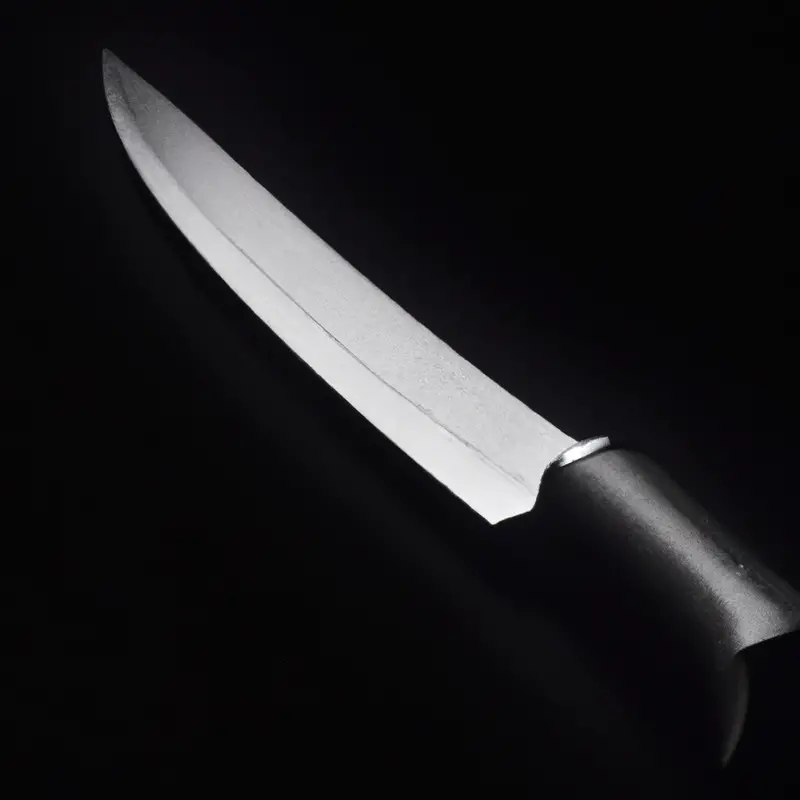
Building Your Santoku Knife Skills: Practice and Patience for Mastering the Art of Cutting Tough Fruits
Building your Santoku knife skills takes practice and patience to master the art of cutting tough fruits. While the Santoku knife is a reliable tool for cutting fibrous fruits, using it skillfully requires patience and practice.
To build your skills, start by handling the knife correctly and mastering basic techniques like slicing, dicing, and chopping.
You also need to ensure that your blade is sharp and properly maintained. Improving your grip and avoiding injuries is another critical aspect of building your skills.
Finally, it’s crucial to learn the dos and don’ts of using a Santoku knife on tough produce and choosing the right fruits for the job.
With sustained practice and dedicated effort, you can perfect your cuts and achieve clean, precise slices every time you use your Santoku knife.
Final Verdict
Mastering the art of cutting through fibrous fruits with a Santoku knife requires practice, patience, and proper technique. By choosing the right blade, maintaining its sharpness, and holding it correctly, you can achieve clean and precise cuts every time.
Remember to prioritize safety and avoid common mistakes, while also selecting the best fibrous fruits for your Santoku knife.
Building your skills will take time, but with dedication, you can become an expert in no time. With these tips and tricks in mind, you can confidently tackle tough produce with ease and precision.
So, grab your Santoku knife, put these techniques to the test, and enjoy slicing, dicing, and chopping your way through a world of delicious and nutritious fibrous fruits.

